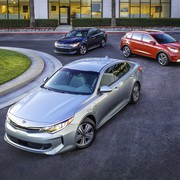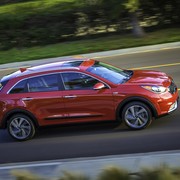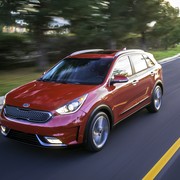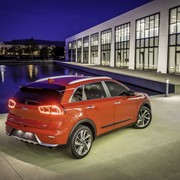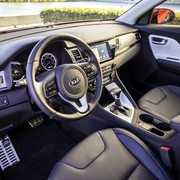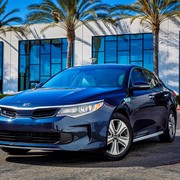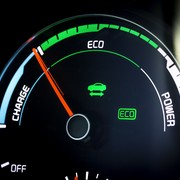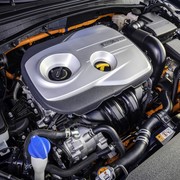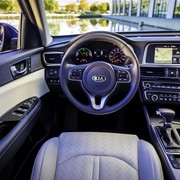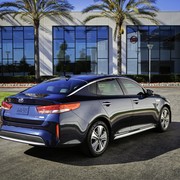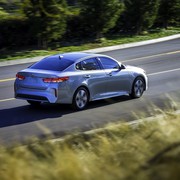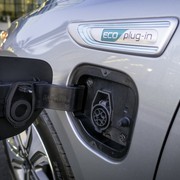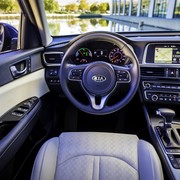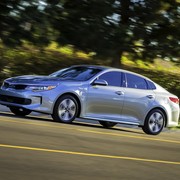
Kia Motors took the opportunity at the Chicago Auto Show to unveil its fuel-efficient, alternative drive line-up, the Kia Niro Hybrid Utility Vehicle (HUV), the all-new Optima Plug-in Hybrid (PHEV) and Optima Hybrid (HEV) - all three of which are being introduced under the Kia Motors EcoDynamics environmentally friendly sub-brand.
The one we're currently most interested in would be Kia Niro. Niro was being prepped long for its media debut, but finally we can see it without the mask. The Hybrid Utility Vehicle, or the HUV, follows Kia's latest design trends (albeit its look is atypical for a hybrid) and has a favourable drag coefficient of 0.29 due to careful aerodynamic work.
The hybrid powertrain uses a 103-horsepower direct-injected Kappa 1.6-litre GDI four-cylinder engine, running on the ultra-efficient Atkinson Cycle, combined with the company's own six-speed dual-clutch transmission, cooled exhaust gas recirculation (EGR), GDI and a long-stroke-narrow-bore specification to maximize efficiency. The vehicle produces outstanding fuel economy with a targeted 89 g/km CO2 emissions with the help of a 32-kilowatt (43-hp) electric motor. Working in tandem with the gasoline engine they produce a combined power output 146 horsepower and 195 lb.-ft. of torque. Powering the system is a compact and lightweight 1.56-kWh Lithium Ion Polymer battery located underneath the rear seat.
According to Kia, Niro's parallel and simplified hybrid system creates seamless transitions of power delivered to the front wheels, resulting in a very un-hybrid-like driving experience. Special attention was also paid to brake feel, so Niro's regenerative system seamlessly blends in hydraulic friction braking.
At the Chicago Auto Show, Niro was accompanied by the hybrid and plug-in hybrid vresions of Optima.
Kia Optima Hybrid's new hybrid powertrain targets a 10 percent improvement in fuel economy over the outgoing model, which is also due to the fact that it's replacing the previous generation's 2.4-liter engine with an efficient and compact 2.0-liter GDI four cylinder – estimated at 154 horsepower – coupled with a hybrid starter generator and tied to an upgraded, smooth-shifting six-speed transmission. A 38 kW electric motor and clutch replaces the traditional torque converter, helping create a total combined output of 193 horsepower at 6,000 rpm. Giving life to the electric motor is a more compact, lightweight, high-density lithium-polymer battery pack that was given a 13-percent increase in capacity to current 1.62 kWh.
Optima Plug-In Hybrid uses a similar system as Optima Hybrid, the difference being the transmission-mounted 50 kW motor, which is 42 percent more powerful than in the previous Optima Hybrid to allow for greater all-electric capability. With an estimated 600 miles (almost 1000 kilometers) of total driving range, the Optima PHEV's next-generation battery system features a 9.8 kWh lithium-ion polymer battery pack, which produces roughly 60 percent more energy output than the battery pack found in the outgoing Optima's hybrid system. A full charge can be achieved in less-than three hours via a 240V (Level 2) charger, and less-than nine hours via a 120V (Level 1) charger.
